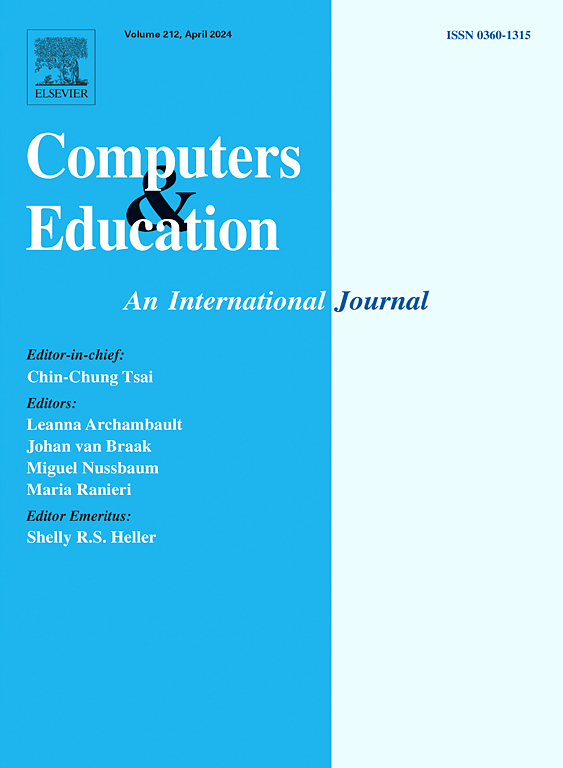Webcam Use and Its Role in Children’s Engagement and Achievement During Extended Remote Learning
IF 10.5
1区 教育学
Q1 COMPUTER SCIENCE, INTERDISCIPLINARY APPLICATIONS
引用次数: 0
Abstract
Online classes substitute in-person instruction in K-12 general education, yet whether children’s webcam use in online classes is meaningful for their learning remains poorly understood. This study examined children’s webcam use and academic outcomes during the COVID-19 pandemic using data from 1,426 elementary students (49% male, 47% female, 93% White) across 65 classrooms, exploring how individual- and classroom-level webcam use, socioeconomic and demographic factors, and remote learning duration explain variation in children’s engagement and achievement. In May 2021, students reported their remote learning routines and online class participation since May 2020; responses were then linked with 2020-2021 MSTEP achievement and demographic data. Correlational analyses indicated individual webcam use varied as a function of children’s perceived engagement, academic achievement, socioeconomic disadvantage, and gender identity, while classrooms differed in mean webcam use based on socioeconomic and demographic composition, remote learning duration, and mean engagement and achievement. MANOVA results indicated classroom webcam norms had a larger effect on engagement during remote learning relative to individual use. Specifically, children in classrooms with网络摄像头的使用及其在扩展远程学习期间儿童参与和成就中的作用
在K-12通识教育中,在线课程取代了面对面的教学,然而,孩子们在在线课程中使用网络摄像头对他们的学习是否有意义,人们仍然知之甚少。本研究使用来自65个教室的1426名小学生(49%男性,47%女性,93%白人)的数据,调查了COVID-19大流行期间儿童的网络摄像头使用和学业成绩,探讨了个人和课堂层面的网络摄像头使用、社会经济和人口因素以及远程学习持续时间如何解释儿童参与度和成就的变化。2021年5月,学生报告了自2020年5月以来的远程学习习惯和在线课堂参与情况;然后将回答与2020-2021年MSTEP成就和人口统计数据联系起来。相关分析表明,个人网络摄像头的使用随着儿童感知参与、学业成就、社会经济劣势和性别认同的变化而变化,而教室的平均网络摄像头使用基于社会经济和人口组成、远程学习持续时间、平均参与和成就而不同。方差分析结果表明,相对于个人使用,课堂网络摄像头规范对远程学习的参与有更大的影响。具体来说,在普遍网络摄像头规范的教室里,与在中等/混合或低网络摄像头规范的教室里的孩子相比,在普遍网络摄像头规范的教室里的孩子报告的平均情感和行为投入显著更高。多层模型显示,同学使用网络摄像头解释了儿童2020-2021年成绩差异的很大一部分,并且比个人使用网络摄像头更能预测2020-2021年的成绩。总体而言,研究结果强调,在为小学生群体开发和完善有效的在线课堂结构和课程时,需要考虑课堂级网络摄像头的使用政策和激励措施。
本文章由计算机程序翻译,如有差异,请以英文原文为准。
求助全文
约1分钟内获得全文
求助全文
来源期刊

Computers & Education
工程技术-计算机:跨学科应用
CiteScore
27.10
自引率
5.80%
发文量
204
审稿时长
42 days
期刊介绍:
Computers & Education seeks to advance understanding of how digital technology can improve education by publishing high-quality research that expands both theory and practice. The journal welcomes research papers exploring the pedagogical applications of digital technology, with a focus broad enough to appeal to the wider education community.
 求助内容:
求助内容: 应助结果提醒方式:
应助结果提醒方式:


